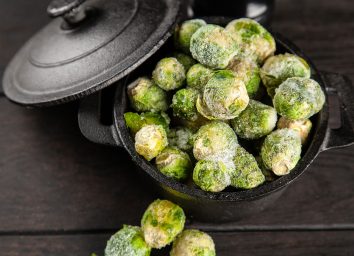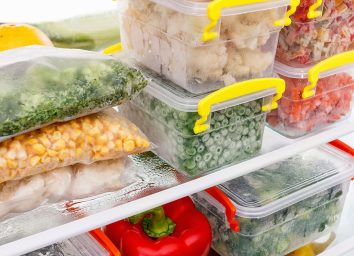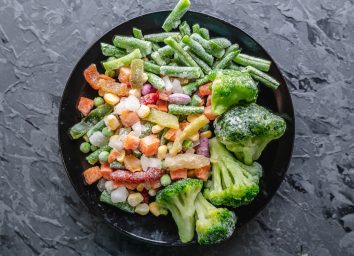How to Freeze Fresh Fruits and Vegetables Properly
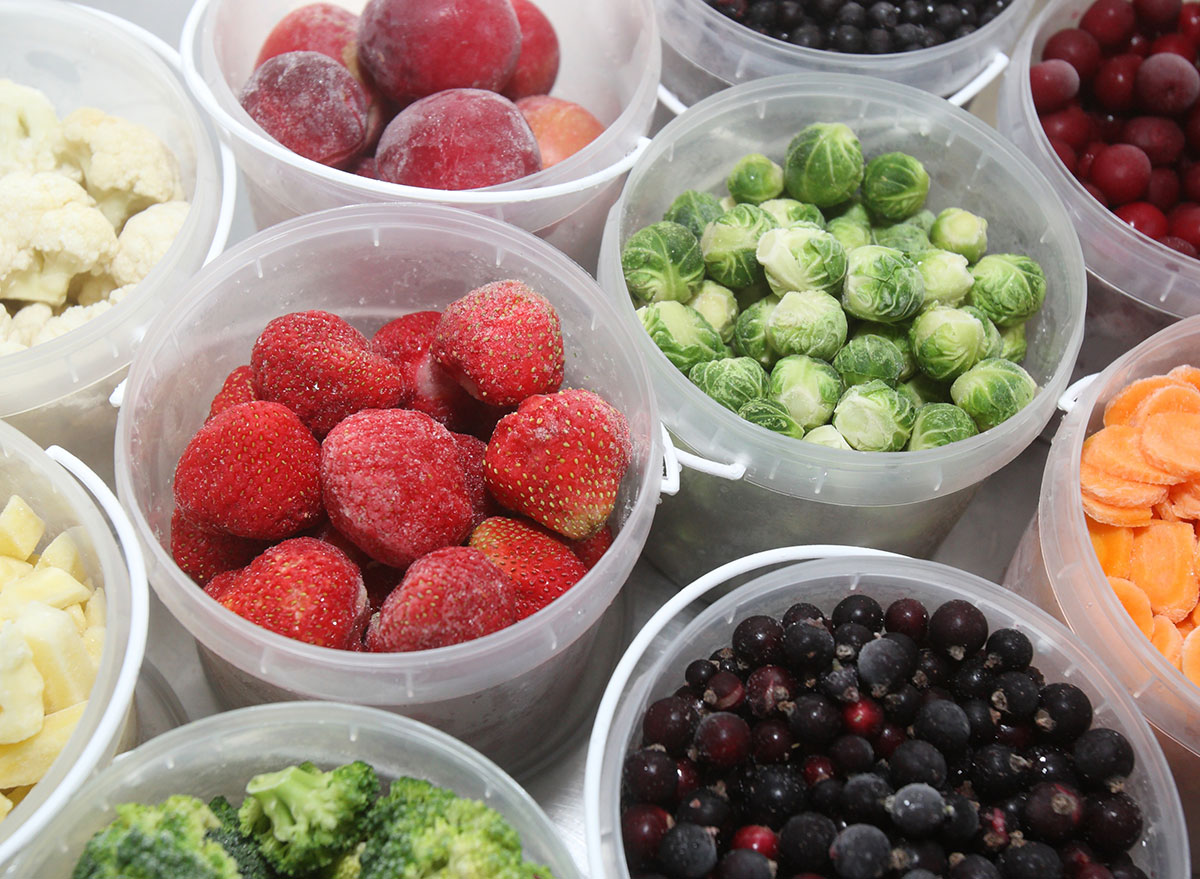
The coronavirus has impacted the U.S. in many ways, including our food supply. Foods like meat and frozen pizza could become scarce soon, as fewer people are working at production facilities. Prolonging the life of foods is a good thing to know how to do, whether because of food shortages or because you're trying to limit trips to the store.
The National Center for Home Food Preservation has a detailed list of foods suitable and not suitable for freezing, and it's worth a look. Foods like frozen fruits and vegetables, for example, can last for many months. But if your local grocery store has a shortage of them, don't worry, you can still freeze your own produce at home. By following these instructions, you won't have to worry about a shortage of fruits or vegetables—in your house, at least.
How to Freeze Fruits
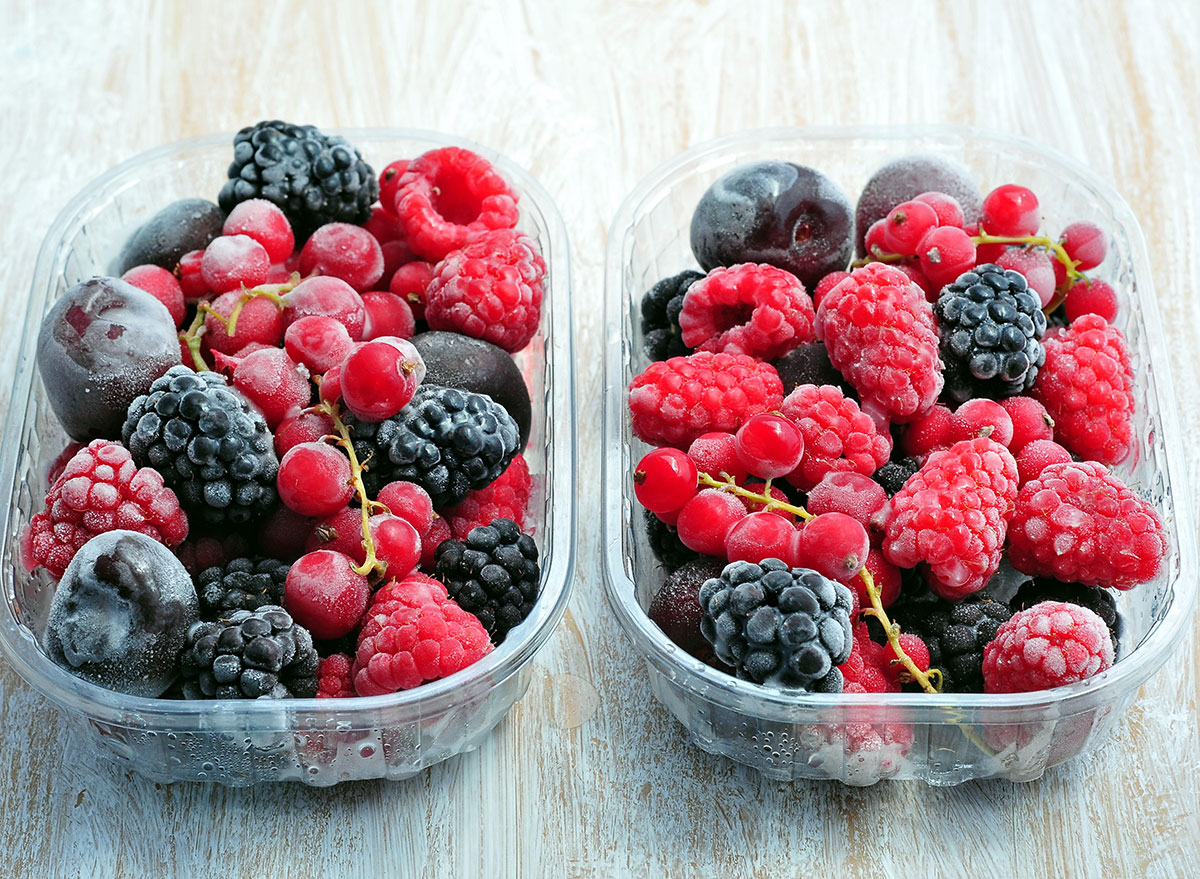
Choose a Freezer Container
Before you start preparing your fruits, select and assemble the containers you will be using. You can't just use any type of container, though. "Containers should be moisture-vapor resistant, durable, easy to seal, and should not become brittle at low temperatures," according to the University of Georgia's College of Family and Consumer Sciences. Containers that are acceptable to use include plastic freezer containers, freezer bags, and glass canning or wide-mouth jars. Using regular jars that aren't designed for canning can result in cracks due to the cold temperature.
Prepare the Fruits
Make sure to "choose well-ripened fruits for freezing," explains the Virginia Cooperative Extension. Sort, wash (don't allow fruits to soak in water, they will lose their nutrients and flavor), and drain fruits. If there are any poor-quality or green parts, discard them appropriately. Peel or slice your fruits as you prefer.
A tip to keep in mind is to "prepare enough fruit for only a few containers at a time, especially those fruits that darken rapidly," according to the University of Georgia. Be mindful to not overpack your bags or containers.
Know Which Packing Type to Use
There are several packs that you could use to freeze your fruits: a syrup pack, a sugar pack, a dry pack, or an unsweetened pack. The type of pack that you select will be based upon its intended use. "Fruits packed in syrup are generally best for uncooked dessert use; those packed in dry sugar or unsweetened are best for most cooking purposes, because there is less liquid in the product," according to the University of Georgia.
Prevent Discoloration
Fruits such as peaches, apples, pears, and apricots can darken quickly when exposed to air or during freezing. They can also lose flavor when thawed. Some of the ways that you can prevent that is by using ascorbic acid or vitamin C. "Not only does it preserve the natural color and flavor of fruits, but it adds nutritive value as well," states the University of Georgia. You can find ascorbic acid at drugstores or wherever freezing supplies are sold.
Have a Plan for Packaging, Labeling, and Storing
Before sealing the container, make sure to leave headspace between the food and closure to allow for expansion as the food freezes. Be mindful that the sealing edges are free of moisture and food particles. Once you seal the container, label the fruit, date, and type of pack. Freeze fruits at 0 degrees Fahrenheit or lower.
"Most fruits maintain high quality for eight to twelve months at 0 degrees Fahrenheit or below; citrus fruits and citrus juices, for four to six months," according to the University of Georgia. Once they are frozen, rearrange the individual packages and store them by type.
How to Freeze Vegetables
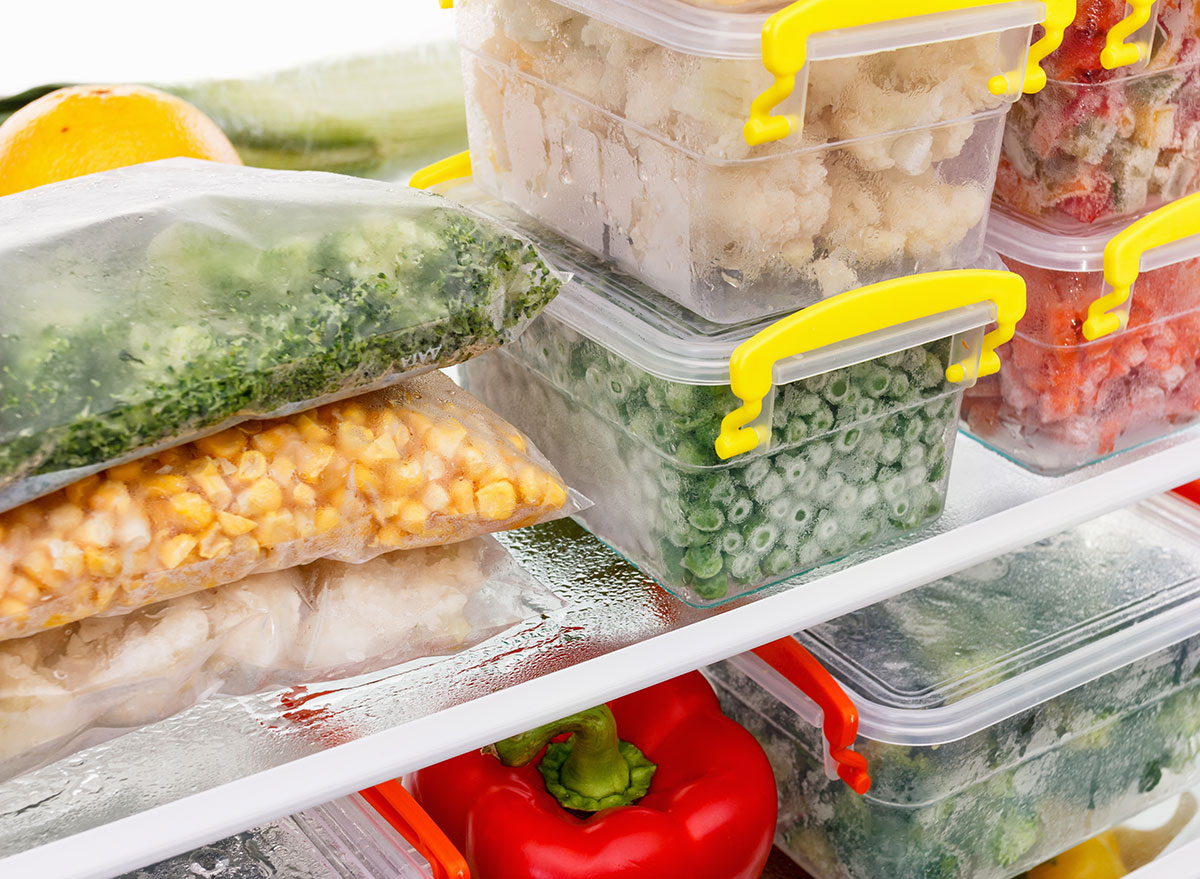
Choose a Freezer Container
As with freezing fruit, the containers best for freezing vegetables include plastic freezer containers, flexible freezer bags, protective cardboard cartons the vegetables came in, or glass canning jars. Vegetables in wide-mouth jars are easier to remove than narrow-mouth jars.
Prepare the Vegetables
"Use vegetables at peak flavor and texture for freezing," the University of Georgia recommends. Wash vegetables in cold water and then sort according to size for blanching.
Blanch the Produce
Blanching is the process of scalding vegetables in boiling water or steam. You must do this in order to freeze vegetables the right way. "It stops enzyme actions which can cause loss of flavor, color and texture," explains the National Center for Home Food Preservation. It also cleans the surface, brightens the color, restores loss of vitamins, and softens the vegetables, which makes packing them easier.
There are a few ways you can do this process. One of them is water blanching, which is the best method for home freezing. "Use a blancher which has a blanching basket and cover, or fit a wire basket into a large pot with a lid. Use one gallon water per pound of prepared vegetables. Put the vegetable in a blanching basket and lower into vigorously boiling water," suggests the National Center for Home Food Preservation.
Steam blanching is recommended for broccoli, pumpkin, and sweet potatoes. It does take a little longer than water blanching, though. To properly steam blanch your vegetables, use a pot with a tight lid and basket. "Put an inch or two of water in the pot and bring the water to a boil. Put the vegetables in the basket in a single layer so that steam reaches all parts quickly. Cover the pot and keep heat high," instructs the National Center for Home Food Preservation. Depending on the vegetables, use each option accordingly. As soon as blanching is complete, cool the vegetables in cold water that's 60 degrees Fahrenheit or lower.
Know Whether to Dry or Tray Pack Your Vegetables
The two packing methods that are best for frozen vegetables are dry and tray packs. Dry packing includes placing the blanched and drained vegetables in containers and packing them tightly to cut down on the amount of air in the package. If you're using freezer bags, make sure to leave space to allow the food to expand.
For tray packs, place chilled and drained vegetables in shallow trays or pans. Freeze them until the vegetables are firm and then quickly fill freezer bags or containers.
Label and Store the Veggies
Don't forget to label your containers or bags with the date and name of the products, and then freeze them at 0 degrees Fahrenheit or lower. "Most vegetables maintain high quality for 8 to 12 months at 0 degrees Fahrenheit or lower," according to the University of Georgia.
Shortages on your favorite food products may be coming, so being prepared is more important than ever. By following these helpful instructions, you'll preserve the life of your fruits and vegetables, making it one less thing to worry about.

